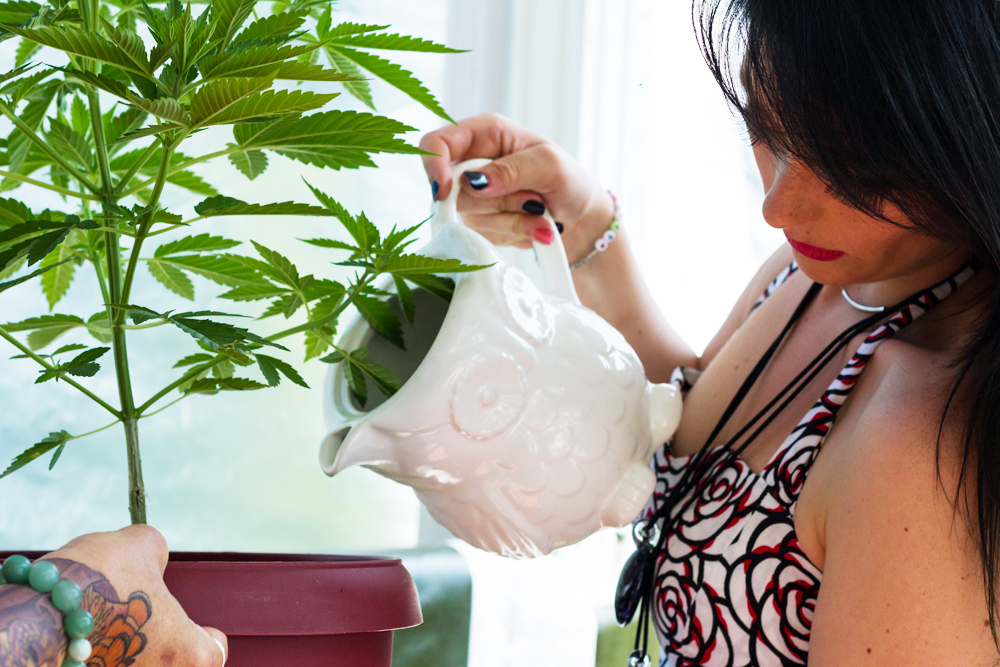Celebrations are over, the holidays have come and gone, the bills have started coming in, and tax time is near. Which means the days have started getting longer and many of us are anxiously waiting to start our new gardens so now is the time to finalize your summer growing plans. Good planning pays off and you gotta make hay while the sun shines, as the old saying goes.
Pots and Planters
By now you should have chosen the strains you want to grow, have picked out your location(s), and have acquired your seeds. Since I’m growing mostly autoflowering Candy Cane from Crop King Seeds I only need three- or four-gallon pots. If you want to grow conventional plants that have a vegetative cycle, you are going to need at minimum five-gallon pots but will do much better with seven-gallon pots or grow bags. A ten-gallon grow bag or planter is ideal if you know you won’t be moving it, or you can build large planter boxes and attach wheels as necessary.
SCROG System
My plan is to also grow one plant in a SCROG system, which stands for ‘screen of green’. Basically, it’s a grid framework of string, plastic or even 1.5-inch chicken wire suspended over a young plant that has been ‘super-cropped’ or clipped to force it to branch out. As the vegging branches grow through the screen the new shoots are bent and tied back under the screen. This is repeated as the plant grows until the entire screen is filled, until forcing the plant into flowering stage by keeping it in the dark for twelve hours a day.
To achieve that mid summer you just need to build a frame that will cover the plant and wrap it in some light-blocking material. I like to use large, recycled, heavy cardboard boxes cut to size and then staple a dark plastic picnic tablecloth to that. I use a good thick one so no light penetrates it, and a half-inch staple gun comes in real handy here.
Having a system that’s able to force your plants to flower using nothing but responsibility and some ingenuity gives you the chance to pull off two crops in a summer and you get to bud out your plants under the full force of the midsummer sun. All you need to do is note what time the sun goes down, say 9:30 pm, then cover your plants for the night and don’t wake them up till 9:30 am when you remove the covering to expose them to full morning sun. One year I just moved my plants into a dark room at night and put them out again in the morning. An alarm clock is a good idea when doing this till you get into the swing of it.
Soil and Feed
The next matter of great importance is what to feed your plants. The easiest and least expensive way to do this is keep it all organic; make up your own soil mix depending on what strains you have lined up. Good soil such as Pro-Mix or Sunshine Mix, along with worm castings or chicken, sheep, steer, and mushroom manures are easy to come by but some of the ‘time release powders’, as I like to call them, can be harder to find. The list includes, but is not limited to, blood meal, bone meal, alfalfa meal, kelp meal, cottonseed meal, greensand, rock phosphate, oyster shell flour, dolomite lime, and there’s even two types of bat guano: one from insect-eating bats that’s best for vegging, and another from fruit-eating bats that’s used to aid in flowering. I used to get my powders in bulk from a local feed store and you won’t need very much so you could try that route.
A good basic mix: for every five gallons of soil add two cups of worm castings, one cup each of chicken manure, mushroom manure, bone meal, rock phosphate, greensand, and lime.
If you have it, add to that a half a cup each of cottonseed meal and kelp meal.
I use my five-gallon pot to measure out the soil into a plastic tote and mix in that; I recommend you use a dust mask unless you like chewing dirt. Don’t be afraid to adjust the mix using common sense and a little research from our good friend Google, there’s lots of good soil mix recipes online.
Another thing you might consider adding to your soil is polymer beads. They retain excess water and then release it in dry times, but they are not cheap and — unless you plan to be away much of the time or are growing in a remote location — are unnecessary.
When you make your own premixed organic soil you don’t need to add anything else to it all year except good clean water, and you get to benefit of smoking organic cannabis with all the flavours as they were meant to be experienced.
For folks wanting to grow on the patio or deck, often there is at least one disadvantage point: people can see what you are growing and you wish there was some screen or hedge for privacy.
Next month I’ll discuss ways this can be achieved through distraction and with creative screens you may not have thought of. Once again here’s where strain selection comes into play; it’s much easier to hide twenty-four-inch autoflowering plants than it is to hide four-foot tall bushy indicas. But tricks like growing a variety of bright flowers always draws one’s eye and attention away from the plainer greenery beside them. So look at gardening not just as growing some pot but as tending to the planet by tending to yourself, make this your zen garden.
Keep it small and simple or go for the bumper crop, but remember to always plan well.







